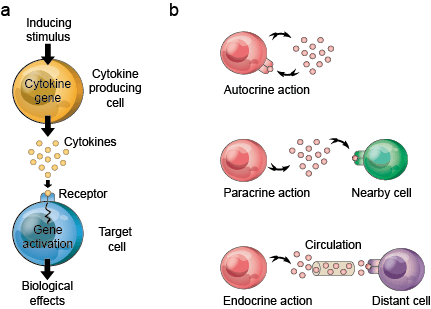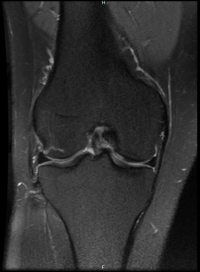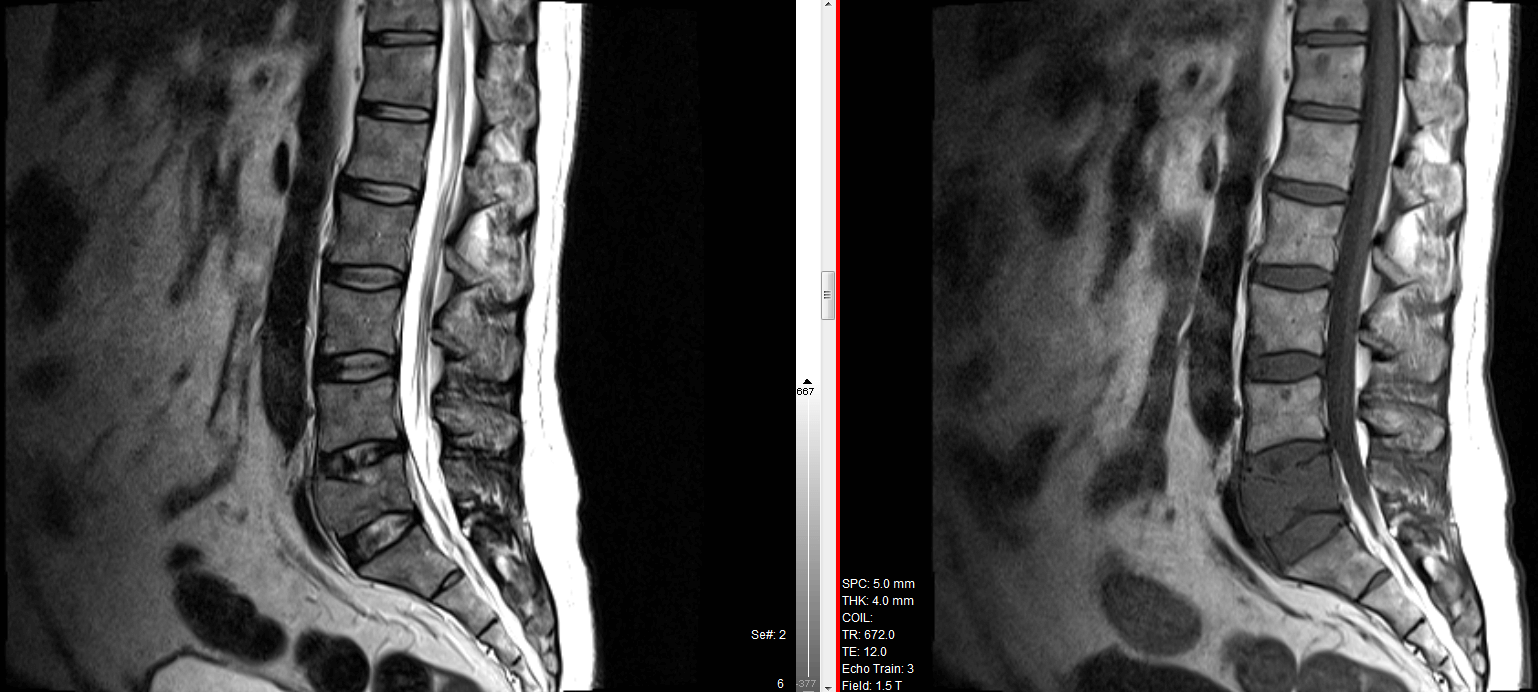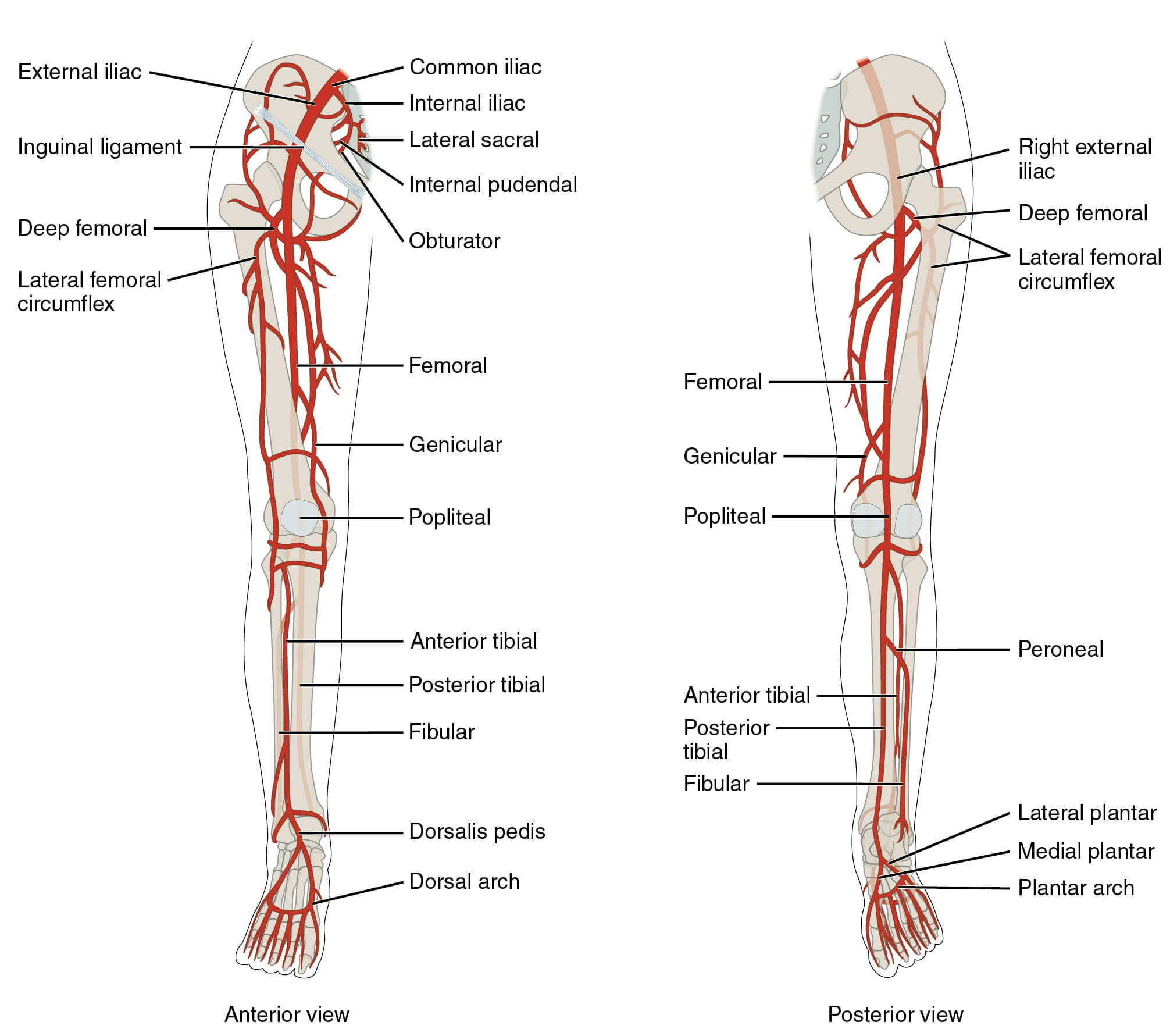Cytokines are glycoproteins that are secreted by different cells in the body, mainly cells of the immune system (leucocytes). They play a role in the immune system, where they regulate the activation and inhibition of the immune response. Cytokines are a major communication mechanism used by immune cells. They have a specific effect on the interactions and communications between cells thereby serving as intercellular chemical messengers. They coordinate and propagate immune responses within the body.
Types of Cytokines
They can be divided into five categories:
- Interleukins (name suggests they act between leukocytes i.e. inter-leukins but that is not the case as they are produced by a variety of body cells.)
- Interferons (these interfere with viral replication)
- Colony-stimulating factors (bind to receptor proteins on the surfaces of hemopoietic stem cells, thereby activating intracellular signalling pathways that can cause the cells to proliferate and differentiate into a specific kind of blood cell)
- Tumour necrosis factors (mainly secreted by macrophages and can induce cell death)
- Growth factors (signalling proteins that stimulate cell growth, differentiation, survival, inflammation, and tissue repair)
Cytokines can also be divided into proinflammatory such as
- interleukin-6
- interleukin-1β
- tumor necrosis factor alpha (TNFα)
or anti-inflammatory such as
- interleukin-10
- transforming growth factor-β (TGF-β)
Throughout the human body, proinflammatory cytokines are mainly secreted by endothelial cells and monocytes, while in the brain, they are mainly secreted by microglia cells (the primary immune cells of the brain, of monocyte origin).
Cytokine mediators have been recognized as key players in the inflammatory disease processes in RA and other rheumatic diseases. Biologic therapeutic strategies using antibodies targeting specific cytokines have proven efficacious in treatment of both RA and AS.
Cytokines Action
Cytokines are synthesized “on demand,” often in response to another cytokine and typically not stored within the cell. Once secreted, the cytokine binds to a receptor, on the surface of the target cell. This triggers a signalling cascade inside that cell. The signal ultimately reaches the nucleus, where the effects of the cytokine are manifested in changes in gene transcription and protein expression—i.e., genes, which code for proteins, may be turned on or off, and protein production may be stimulated or inhibited. (Ref: Biopharmaceuticals – Monica Gill)

Image Source: Creative Diagnostics
Chemokines are small chemotaxic molecules that possess the ability to induce chemotaxis in nearby responsive cells.
Kinins
The kinins are a family of potent bioactive peptides which directly mediate inflammation and which advance to produce the end product bradykinin, a nonapeptide with many pro-inflammatory functions.
Kinins are most important primary mediators of inflammation. Kinins express their functional effects by activating specific kinin receptors situated on the surface membranes of many cell types. The kinin peptides are potent contractors of smooth muscle, cause arteriolar dilatation, and increase vascular permeability. They are powerful pain-producing substances, and they cause pain through two mechanisms:
- by the direct stimulation of nociceptor fibers (C and Aδ), and
- by the sensitization of sensory fibers to physical and chemical stimuli. This algesic effect of BK is potentiated by thromboxanes and prostaglandins, and 5′-HT.
Bradykinin
Bradykinin, a biologically active peptide, is released by the breakdown of a high molecular weight kininogen by kallikreins. Bradykinin is involved in plasma extravasation, bronchoconstriction, nociception, vasodilation, and inflammation. It mediates inflammation by causing vasodilation, by increasing vascular permeability, and by stimulating the synthesis of prostaglandins. Bradykinin causes pain by directly stimulating primary sensory neurons and provoking the release of substance P, neurokinin, and calcitonin gene-related peptide.





